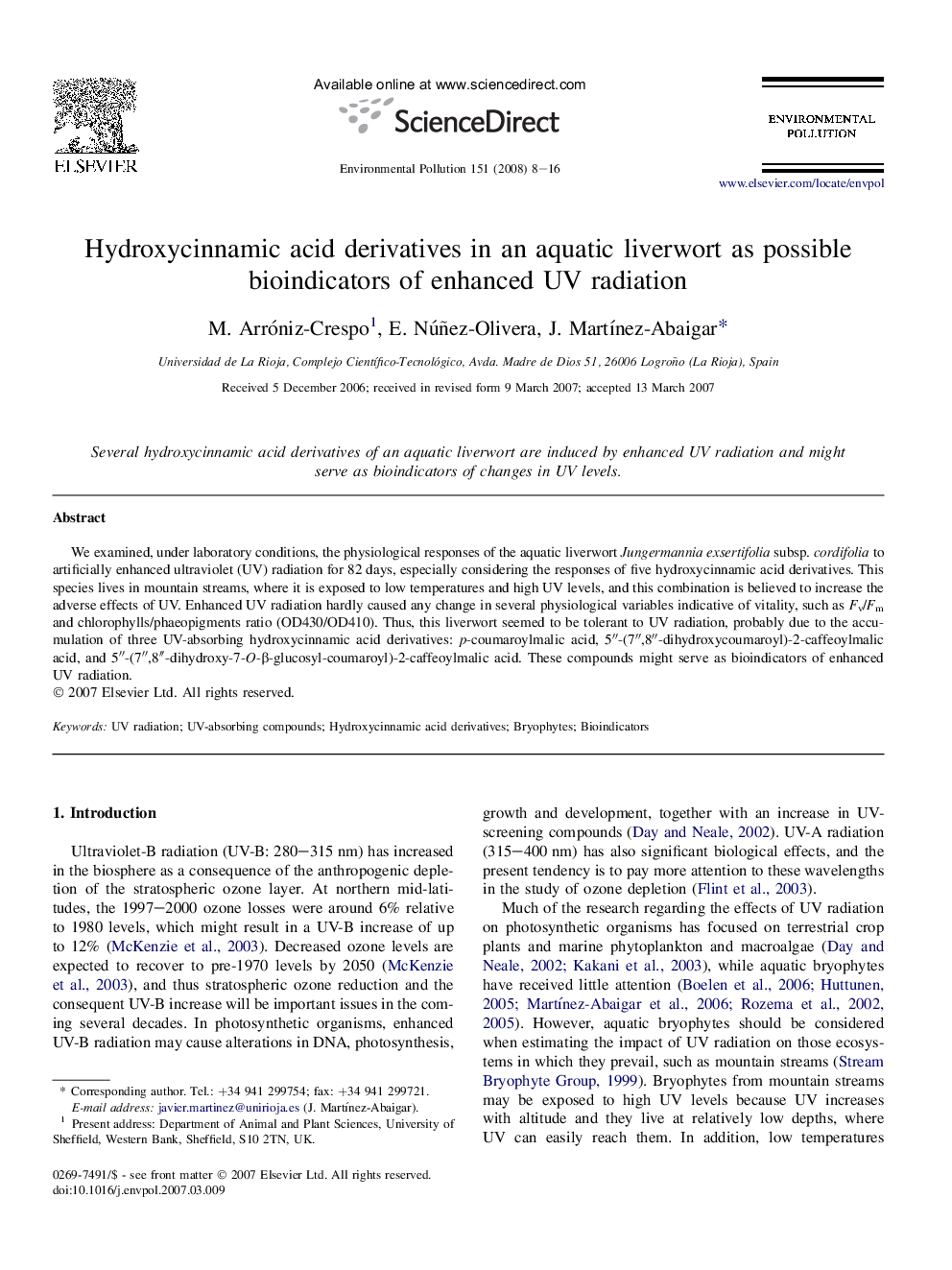| Article ID | Journal | Published Year | Pages | File Type |
|---|---|---|---|---|
| 4427224 | Environmental Pollution | 2008 | 9 Pages |
We examined, under laboratory conditions, the physiological responses of the aquatic liverwort Jungermannia exsertifolia subsp. cordifolia to artificially enhanced ultraviolet (UV) radiation for 82 days, especially considering the responses of five hydroxycinnamic acid derivatives. This species lives in mountain streams, where it is exposed to low temperatures and high UV levels, and this combination is believed to increase the adverse effects of UV. Enhanced UV radiation hardly caused any change in several physiological variables indicative of vitality, such as Fv/Fm and chlorophylls/phaeopigments ratio (OD430/OD410). Thus, this liverwort seemed to be tolerant to UV radiation, probably due to the accumulation of three UV-absorbing hydroxycinnamic acid derivatives: p-coumaroylmalic acid, 5″-(7″,8″-dihydroxycoumaroyl)-2-caffeoylmalic acid, and 5″-(7″,8″-dihydroxy-7-O-β-glucosyl-coumaroyl)-2-caffeoylmalic acid. These compounds might serve as bioindicators of enhanced UV radiation.
